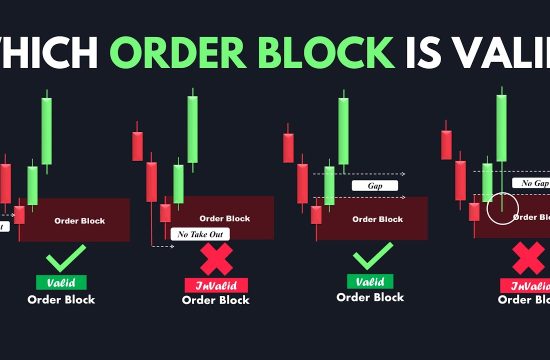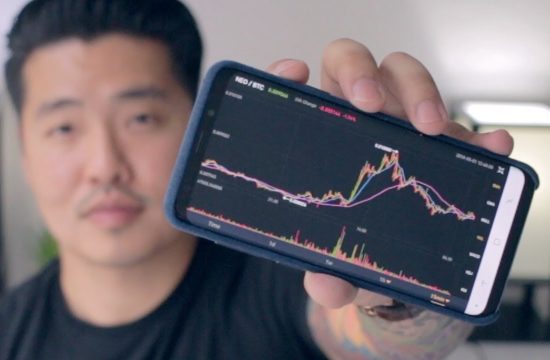Set Clear Profit Targets
Understanding Your Objectives
Setting clear profit targets is like having a roadmap before you hit the road. When I first started trading Bitcoin, I didn’t really know how much I wanted to make on each trade. It was a bit chaotic! But, once I figured out exactly what I was aiming for, everything changed. The clearer the target, the easier it is to make informed decisions. Think of it as aiming your arrow; without a target, you’re just throwing it blindly!
It’s also important to consider your risk tolerance when setting these targets. How much are you willing to risk for the chance to make those profits? Trust me, balancing your targets with your comfort levels can save your sanity. I quickly learned that achieving small, consistent profits is usually better than aiming for the moon and ending up feeling deflated.
So, take the time to write down your objectives. Make sure they are realistic and, importantly, achievable. This practice not only helps you stay focused but also gives you a sense of direction in the fast-paced world of Bitcoin trading.
Using Technical Analysis Tools
Back in the day, I was all about gut feelings and randomness. But then I discovered technical analysis tools, and oh boy, what a game changer! Chart patterns, indicators like moving averages, and oscillators—the sort of stuff that sounds technical but is actually super helpful. These tools can help identify potential entry and exit points for securing profits.
When I started using candles and trend lines, it really opened my eyes to market movements. Sure, it takes time to learn, but the payoff is totally worth it. These tools help you see when Bitcoin prices might dip or rise, allowing you to act before the rest of the market catches up.
Remember, though, these tools aren’t foolproof. They rely on historical data, and markets can be unpredictable. It’s a mixed bag, but using these tools alongside your profit targets can really boost your chances of getting those sweet, sweet gains!
Adjusting Targets Based on Market Conditions
Okay, so you’ve set your targets, but what do you do when the market starts acting funky? Adjusting your targets based on evolving market conditions is key. When Bitcoin’s on a wild ride, ignoring that volatility can be a nasty mistake.
I learned this the hard way! There were times when I stubbornly clung to my original plans, only to watch my profits slip away. So now, I regularly monitor the market and adjust my targets accordingly. If Bitcoin shoots up unexpectedly, for example, I might raise my target—after all, why not ride the wave as long as it lasts?
Always keep your ear to the ground and be flexible. This doesn’t mean you should freak out over every little market shakeup. Instead, practice measured adjustments that align with your overall trading strategy and risk management principles.
Implement Stop-Loss Orders
What is a Stop-Loss Order?
First things first—what’s a stop-loss order? Simply put, it’s an order placed with a broker to buy or sell once the stock (or Bitcoin, in this case) reaches a certain price. Let me tell you, this is your safety net if the market takes a nosedive. In my early days, I didn’t utilize them, and the heartache of watching a profit vanish was brutal.
When I finally set my first stop-loss order, it felt like a weight lifted off my shoulders. With that safety net in place, I was able to trade with much more confidence, knowing I wasn’t going to completely tank even if things went south. It’s all about protecting your cash, after all!
Setting a stop-loss should be based on your analysis. I usually place mine below a significant support level—if it falls through that, I know I need to get out. It’s a simple strategy, but it absolutely pays off in the long run.
Choosing the Right Level for Your Stop-Loss
The next step is deciding where to place your stop-loss order. Too close and it might trigger with normal market fluctuations; too far and you could lose more than necessary. This is something I really struggled with, but through experience, I found a nice balance—usually a percentage below my entry price.
Think about the volatility of Bitcoin. It can swing significantly in a short amount of time, so I personally recommend testing a couple of different levels to see what works best. Each trader’s style is unique, so find what feels right for you.
Once I started to nail down my stop-loss placement, I got so much more comfortable trading—it’s like having an insurance policy for my investments. Trust me; this is an essential tool in your trading arsenal.
Reviewing and Adjusting Your Stop-Loss Strategy
Alright, so you’ve got a stop-loss order in place, but don’t just set it and forget it! Periodically review your stop-loss strategy as your portfolio grows and market conditions change. Keeping an eye on what’s happening around you can make a world of difference.
I personally make it a habit to reassess my positions regularly. If a trade is performing well, consider tightening that stop-loss to lock in profits. Or, if the market changes direction, don’t hesitate to adapt your stop-loss level to mitigate risks.
This is where experience pays dividends—being active in reviewing your strategy can help avoid unnecessary losses, letting you secure those profits before they slip through your fingers.
Diversify Your Investments
The Importance of Diversification
Let me be real; putting all your eggs in one basket can be risky, especially in the roller coaster world of Bitcoin! Diversification is key to securing your profits over time. When I first dabbled in cryptocurrencies, I initially focused solely on Bitcoin. I had a change of heart when I noticed how fluctuating it could be. Then I started exploring altcoins, and that completely transformed my approach!
Diversifying helps to spread your risk out, so if one investment tanks, your entire portfolio doesn’t. Think of it as not only investing in Bitcoin but also branching out into exciting areas like Ethereum or other emerging cryptocurrencies. This also keeps things interesting!
And let’s not forget about non-crypto investments. Maybe you want to dip your toes into stocks, bonds, or real estate. Expanding your portfolio helps cushion against the crazy volatility that comes with Bitcoin trading. It’s all about finding that perfect balance!
How to Choose What to Diversify Into
Thinking about diversifying? It’s essential to do your homework on any potential investments. I started by researching other cryptocurrencies to understand their technology, market potential, and community backing. Take the time to learn what projects resonate with you, and don’t just follow hype.
Remember, diversify strategically! Look into areas that complement your existing investments. For example, if Bitcoin is your primary currency, consider Ethereum because of its smart contract capabilities. There’s depth in diversification that can yield better returns and sizable profits in the long run.
At the end of the day, ensure you’re making informed decisions on where to put your money. Informed diversification is a smart way to build resilience against market chaos while still aiming for that elusive profitability!
Monitoring Your Portfolio
So you’ve diversified, now what? It’s important to monitor your portfolio regularly. Keeping a close eye on both your crypto and non-crypto investments helps you stay on top of changes in the market. I often find that I’ll spend some time every Sunday reviewing my portfolio. It helps me strategize for the week ahead!
Track the performance of your various investments, and don’t hesitate to make changes as needed. There’s nothing wrong with trimming your portfolio if something isn’t working out. Make adjustments based on new information and market trends—being dynamic is vital in this fast-paced industry!
Also, stay educated. The crypto world evolves rapidly, so surrounding myself with reliable news sources has always served me well. This allows me to make the necessary adjustments and ensures I’m always within the loop. Just make it a habit to keep things fresh!
Stay Informed and Educated
The Value of Continuous Learning
One of the absolute best things I’ve done for my trading journey is commit to continuous learning. The crypto space is ever-changing, and what worked a year ago might be outdated today. I always try to dedicate a bit of time each week to read up on new developments, strategies, and market analyses.
I can’t stress enough the importance of staying informed! News, market changes, and even shifts in regulations can all impact your trades. By being proactive in continuously educating yourself, you’re much more likely to spot opportunities and secure profits.
There’s a treasure trove of resources out there, from online courses to articles and podcasts, all geared toward helping you improve your knowledge. Honestly, I diligently read articles, watched videos, and engaged in communities, and it’s helped me grow exponentially.
Engaging with the Community
Don’t overlook the value of connecting with fellow traders! Online forums, social media groups, and local meetups can be a goldmine for information. In engaging with the community, I’ve learned about different trading strategies, seen how others think, and picked up a ton of invaluable tips.
Sharing experiences—both good and bad—can help you navigate through your trading journey. Sometimes you’ll hear about a tactic that completely shifts your mindset. It’s all about exchanging ideas and growing together! Plus, you may form friendships in the process, which is always a plus!
Stay curious and ask questions. Whether you’re browsing Reddit, Twitter, or specialized forums, there’s always someone out there who’s experienced what you’re dealing with!
Utilizing Online Resources
Finally, take advantage of online resources. Platforms like CoinMarketCap, crypto news websites, and trading simulators are invaluable. When I first started, I was glued to these sites, learning the ins and outs and maximizing my strategy through simulation.
Some platforms even offer demo accounts where you can practice without risking any of your precious Bitcoin. This is an excellent way to hone your skills and experiment with different strategies. I often encouraged friends to give it a shot before diving in headfirst!
Never underestimate the power of the internet when it comes to education. Dive deep, explore the different resources available, and watch your skills evolve as you stay informed and engaged in the Bitcoin trading landscape!
FAQ
1. What is the best way to set profit targets in Bitcoin trading?
Setting profit targets involves understanding your objectives, using technical analysis tools, and adjusting those targets based on market conditions. It’s important to have clear and realistic goals to guide your trading strategy.
2. How can stop-loss orders protect my investments?
Stop-loss orders serve as a safety net that automatically sells your Bitcoin at a predetermined price to prevent excessive losses. By implementing them, you can trade with more confidence and protect your gains.
3. Why should I diversify my cryptocurrency investments?
Diversification spreads the risk, so if one cryptocurrency underperforms, your overall portfolio isn’t significantly affected. It’s a strategic way to protect your investments while aiming for greater returns across different assets.
4. How can I stay informed about market changes?
Staying informed can be achieved through continuous learning—reading articles, joining community forums, subscribing to crypto news outlets, and engaging with other traders. Connecting with the community can also bring fresh insights!
5. Is it essential to monitor my portfolio regularly?
Absolutely! Regularly monitoring your portfolio allows you to track performance, make necessary adjustments, and stay aligned with your trading strategy in the fast-paced Bitcoin market. It helps you stay proactive!
Related Content
- Bitcoin, Ethereum Technical Analysis: BTC Starts August Trading Below $29,000
- CRYPTO: DON’T FALL FOR IT!!!
- FETCH.AI FET Elliott Wave Analysis: Bullish and Bearish Scenarios
- Custodia Bank Founder Caitlin Long: ‘The Fed Thinks Only Large Incumbents Should Service Crypto’
- How to Send USDC on BASE (to Another Wallet)









